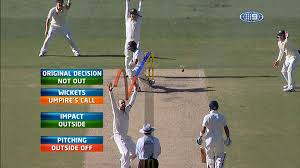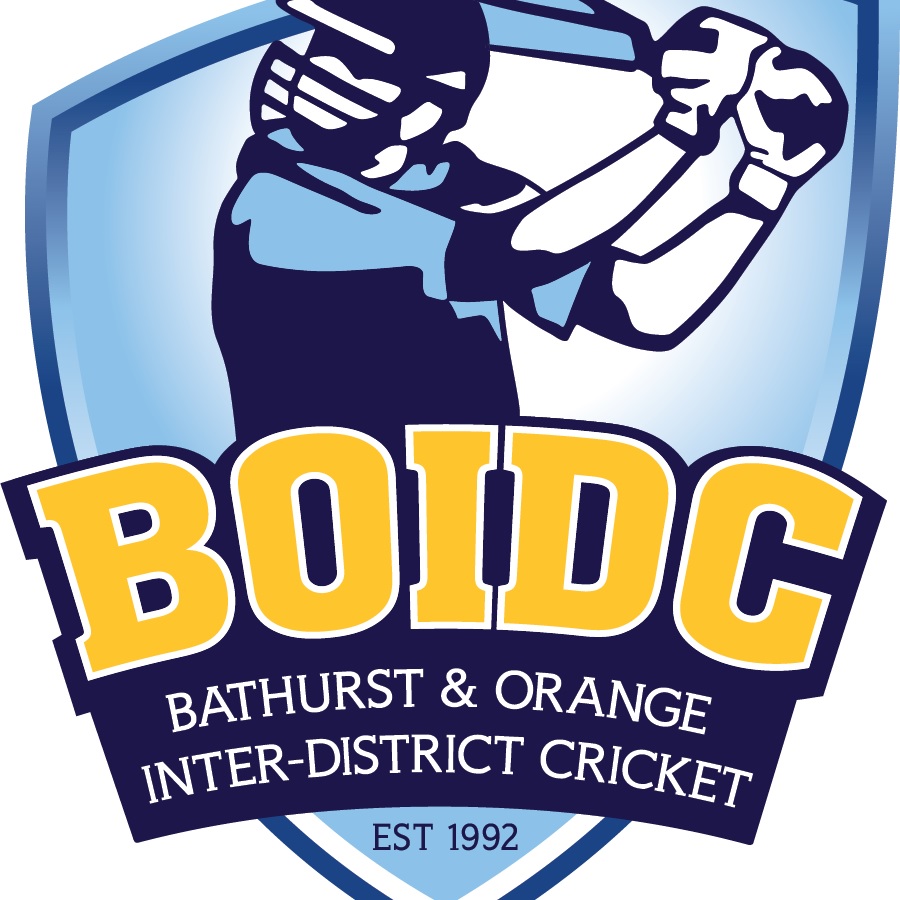About Me
David Dillon
Current Rating: 5 / 5
Accountant Custodian Backoffice
https://custodianbackoffice.com
Sydney, Australia
Strategic Accountant (t/o $2M-$30M) Maritime, Transport + Construction | MBA FCA FCPA | Author | See where you are headed and stay on track
Partner Sponsors
My Activity
answered
Q: The enigmatic Brian Riley was a colourful character of Sydney Grade Cricket in the late 60s, 70s and 80s.
Tom Brooks was a Cricket umpire who stood in 23 Test matches and had previously played 16 first-class games as a fast bowler for New South Wales..
Together they didn’t get along. Riles feud with Tom Brookes started around 1969 and continued throughout much of Riles's grade career and here's how it happened:
In a Poidevin Gray game played at Waverley Oval circa 1969, Petersham was batting and Riles was at the crease facing seamer and great medium pacer Dave Gibson. It was an overcast day, Tom Brookes, test umpire was officiating and Gibbo was steaming in from the scoreboard end of the ground.
Gibbo sends down a shortish ball to Riles, Riles tries to play a forcing shot off the back foot, Gibbo makes a half-hearted appeal, not supported by anyone else on the ground, and Tom Brookes raises the finger and gives Riles out.
Riles immediately says to Tom in his inimitable style – “Tom you are f#@**$! kidding!!”.
Instead of then walking off to the pavilion via point he proceeds slowly down the middle of the pitch towards Tom Brookes. Everyone on the field is waiting with bated breath; is he going to hit Tom, swing a bat at him or what. Riles's reputation has preceded him.
None of that – when Riles gets within reach of Tom, Riles takes of his rim glasses and places them on Tom Brookes head with the comment. “Take these Tom, you f#@**$! need them more than me”.
With that Riles storms of the pitch swearing and cursing all the way to the grandstand. Vintage Brian Riley but he was only 20 at the time and a lot more umpires were to incur the wrath of Brian Riley over the ensuing years.
Tom Brooks was a Cricket umpire who stood in 23 Test matches and had previously played 16 first-class games as a fast bowler for New South Wales..
Together they didn’t get along. Riles feud with Tom Brookes started around 1969 and continued throughout much of Riles's grade career and here's how it happened:
In a Poidevin Gray game played at Waverley Oval circa 1969, Petersham was batting and Riles was at the crease facing seamer and great medium pacer Dave Gibson. It was an overcast day, Tom Brookes, test umpire was officiating and Gibbo was steaming in from the scoreboard end of the ground.
Gibbo sends down a shortish ball to Riles, Riles tries to play a forcing shot off the back foot, Gibbo makes a half-hearted appeal, not supported by anyone else on the ground, and Tom Brookes raises the finger and gives Riles out.
Riles immediately says to Tom in his inimitable style – “Tom you are f#@**$! kidding!!”.
Instead of then walking off to the pavilion via point he proceeds slowly down the middle of the pitch towards Tom Brookes. Everyone on the field is waiting with bated breath; is he going to hit Tom, swing a bat at him or what. Riles's reputation has preceded him.
None of that – when Riles gets within reach of Tom, Riles takes of his rim glasses and places them on Tom Brookes head with the comment. “Take these Tom, you f#@**$! need them more than me”.
With that Riles storms of the pitch swearing and cursing all the way to the grandstand. Vintage Brian Riley but he was only 20 at the time and a lot more umpires were to incur the wrath of Brian Riley over the ensuing years.
A: Reminds me of a story about an umpire called Ronny McGuiness from Bathurst in the late 70s early 80s. Rumour was Ronny's hearing not so great, so when appealing for a caught behind everyone was to appeal. "He'll give the 1st one not out, but for the rest of the day everything is out". One day a new batsmen strode to the cease after a team mate copped a dubious decision. " How many to come Ron?" The reply came " at a quarter to 4 Gil"
answered
Q: First published in 1946 (I read a 1947 edition), the focus of the book is the Bodyline tour by England in 1932-33. It indeed occupies the first half of the book but references to it are sprinkled through the second half as well. Fingleton's candour dropped him into controversy throughout both his playing and writing career and this book was one of the chief reasons for his opponents' attacks.
Not surprisingly, given his robust criticisms of the demigod Bradman, the former captain was most upset by this volume.
Fingleton questioned Bradman's ability and fortitude against the short, fast bowling of England during that heated summer on and off the field when the members at Lords first struggled with their understanding of the Spirit of Cricket. Once the unflinching opener covered in bruises, Fingleton backs his assertions with with descriptions of incidents when he struggled against that form of attack but stood firm. His claim that Bradman ran whilst others stood and took it, stirred a hornets nest but it was the evidence he presented to defend himself against the claim made by Bradman that he leaked the famous Woodfull line to the press - "their are two teams out there. One of them is trying to play cricket; the other is not" - is not only refuted here but played straight back at Bradman.
The second half delivers player portraits and descriptions of other matches he both played in and observed. All is penned in his wonderful prose which stands through time. With a foreword by Sir Neville Cardus and the observations of a man who still once held the record for the most Test 100's in consecutive innings until Everton Weekes 5 topped him, his legendary toughness and durability shine through in his writing.
This is probably the best book written about cricket by an Australian author and set a standard which others such as Gideon Haigh have measured up to but never surpassed. Essential reading for a balanced view of Bradman's impact on Australian cricket and society and to be reminded just how beautiful the game can be in the hands of a wordsmith.
You might need a library or a collector to find it but the search will reward you.
Not surprisingly, given his robust criticisms of the demigod Bradman, the former captain was most upset by this volume.
Fingleton questioned Bradman's ability and fortitude against the short, fast bowling of England during that heated summer on and off the field when the members at Lords first struggled with their understanding of the Spirit of Cricket. Once the unflinching opener covered in bruises, Fingleton backs his assertions with with descriptions of incidents when he struggled against that form of attack but stood firm. His claim that Bradman ran whilst others stood and took it, stirred a hornets nest but it was the evidence he presented to defend himself against the claim made by Bradman that he leaked the famous Woodfull line to the press - "their are two teams out there. One of them is trying to play cricket; the other is not" - is not only refuted here but played straight back at Bradman.
The second half delivers player portraits and descriptions of other matches he both played in and observed. All is penned in his wonderful prose which stands through time. With a foreword by Sir Neville Cardus and the observations of a man who still once held the record for the most Test 100's in consecutive innings until Everton Weekes 5 topped him, his legendary toughness and durability shine through in his writing.
This is probably the best book written about cricket by an Australian author and set a standard which others such as Gideon Haigh have measured up to but never surpassed. Essential reading for a balanced view of Bradman's impact on Australian cricket and society and to be reminded just how beautiful the game can be in the hands of a wordsmith.
You might need a library or a collector to find it but the search will reward you.
A: I read a book on Fingleton, when Bradman got a duck in his last innings, an English journalist reported that Fingleton and O'Reilly were laughing so hard he feared they might both have strokes
answered
Q: Hello, I’m 19 and want to play grade cricket in Brisbane next season.
I’m a top order bat and would like to ask about players mindsets when they go out to bat. Do you have a plan to get to 10 or 20 and what’s your process in building an innings. Thanks.
I’m a top order bat and would like to ask about players mindsets when they go out to bat. Do you have a plan to get to 10 or 20 and what’s your process in building an innings. Thanks.
A: When you 1st come in as an opener there are lots of gaps, so singles and boundaries are at their 'easiest', but you are more chance of snicking out, so openers have to leave a fair few.
Best place to be in the 1st 5 overs is up the other end. Don't worry about getting to 10 or 20, just worry about the next ball and get up the other end.
To plug those gaps, fielders eventually come out of catching spots, so the batsman needs to change gears too.
The ball is older, so you can play shots with less risk and try to pierce the field and hit loose balls to the boundary
Eventually fielders drop back and gaps open up for singles again, so you have to change gears again, but by now you can feed the strike to your batting partner who may be a bit fresher + is being offered more gaps.
Understanding that might help you make a plan about how you are going to bat in between gear changes. You have to turn the dial up and down, if you keep dialing it up you'll make a mistake eventually
Nothing more frustrating that seeing the field drop back a few yards and seeing guys trying to smash it through - I tell kids I coach "nice shot no run" Much better to drop n run and take the 'easy' runs.
It doesn't matter so much how you get them, but the game is about scoring runs.
Best place to be in the 1st 5 overs is up the other end. Don't worry about getting to 10 or 20, just worry about the next ball and get up the other end.
To plug those gaps, fielders eventually come out of catching spots, so the batsman needs to change gears too.
The ball is older, so you can play shots with less risk and try to pierce the field and hit loose balls to the boundary
Eventually fielders drop back and gaps open up for singles again, so you have to change gears again, but by now you can feed the strike to your batting partner who may be a bit fresher + is being offered more gaps.
Understanding that might help you make a plan about how you are going to bat in between gear changes. You have to turn the dial up and down, if you keep dialing it up you'll make a mistake eventually
Nothing more frustrating that seeing the field drop back a few yards and seeing guys trying to smash it through - I tell kids I coach "nice shot no run" Much better to drop n run and take the 'easy' runs.
It doesn't matter so much how you get them, but the game is about scoring runs.
question
Q: Waverley Cricket Club (now Eastern Suburbs Cricket Club – 4th Grade Premiers 1998-99
Back Row – B. Langley, D. Morrow, B. Wilson, S. Silvanivich, T. Ryan, R. Deutsch, J. Harris, H. Smith, D. Dillon, R. Horsell, R. Burnett
Front Row – I. Bromill, D. Paveling, B. Cooper-Fogarty, R. Tomosilio, W. Geber, B. Gibbons, A. Morris
Absent – J. Smith
Back Row – B. Langley, D. Morrow, B. Wilson, S. Silvanivich, T. Ryan, R. Deutsch, J. Harris, H. Smith, D. Dillon, R. Horsell, R. Burnett
Front Row – I. Bromill, D. Paveling, B. Cooper-Fogarty, R. Tomosilio, W. Geber, B. Gibbons, A. Morris
Absent – J. Smith
answered
Q: My son is 15 and loves cricket. During the off-season last year, he worked really hard on his batting.
He was opening the batting and really enjoyed it and wanted to get a lot better. But after two games and he scored 33 and 41 the coach said he batted too slow and for the rest of the season he was batting down the order and didn’t get many chances.
No, he says what’s the point of training this off season. It’s sad as he really does love batting and the game. What advice could anyone offer?
He was opening the batting and really enjoyed it and wanted to get a lot better. But after two games and he scored 33 and 41 the coach said he batted too slow and for the rest of the season he was batting down the order and didn’t get many chances.
No, he says what’s the point of training this off season. It’s sad as he really does love batting and the game. What advice could anyone offer?
A: Tell him to stick at it. Game awareness, understading tempo and the strategic stuff doesn't really kick in till 16-17. Until then it's just ball striking.
I remember getting 80 odd in a trial game for a junior rep team and being pretty happy.
Stuart Webster ( former NSW bat) came up and said, "well played, some great shots .... but, you put yourself under an enormous amount of pressure and if you'd worked the ball around more you wouldn't have needed to bomb them at the end."
Stuey just taught me the difference between ball striking and batting, although it took years for the message to sink in.
It's like the difference between hearing and listening. To listen you must engage the brain - when you bat you have to as well.
This winter get him working on getting off strike - add that to his 33 and 41 ball striking and you'll build him into a much better batsman
I remember getting 80 odd in a trial game for a junior rep team and being pretty happy.
Stuart Webster ( former NSW bat) came up and said, "well played, some great shots .... but, you put yourself under an enormous amount of pressure and if you'd worked the ball around more you wouldn't have needed to bomb them at the end."
Stuey just taught me the difference between ball striking and batting, although it took years for the message to sink in.
It's like the difference between hearing and listening. To listen you must engage the brain - when you bat you have to as well.
This winter get him working on getting off strike - add that to his 33 and 41 ball striking and you'll build him into a much better batsman
question
Q: I was never much of a bowler, but I believe that if a batsman is hit on the pads without offering a shot ALL the benefit should go to the bowler.
If the umpire says not out and DRS shows it clipping the stumps by 1 mm, to me that's out, fair and square.
It happened a few times in 22/23 to Nathan Lyon, where the batsman got the benefit of DRS because less than 50% of the ball was hitting.
For 'not offer a shot' LBW decisions, surely DRS is there to protect that batsman from the umpires howlers, not to protect the umpires from their own howlers.
As it currently stands when not offering a shot, a batsman is afforded the same protection as one that actually took a risk and played a shot but missed.
Fair enough to send it upstairs if you've been robbed... but otherwise use your bat, that's what it's there for.
If the umpire says not out and DRS shows it clipping the stumps by 1 mm, to me that's out, fair and square.
It happened a few times in 22/23 to Nathan Lyon, where the batsman got the benefit of DRS because less than 50% of the ball was hitting.
For 'not offer a shot' LBW decisions, surely DRS is there to protect that batsman from the umpires howlers, not to protect the umpires from their own howlers.
As it currently stands when not offering a shot, a batsman is afforded the same protection as one that actually took a risk and played a shot but missed.
Fair enough to send it upstairs if you've been robbed... but otherwise use your bat, that's what it's there for.
blog post
I was never much of a bowler, but I believe that if a batsman is hit on the pads without offering a shot ALL the benefit should go to the bowler.If the umpire says not out and DRS shows it c ...
answered
Q: Hi Josh, is 14 years old and he has never had any coaching and hasn’t finished growing. He rips in and has a great follow through. His take off landing is a little unconventional. Josh’s dad and I have been discussing should he try and iron it out or embrace it. We’d be grateful for any guidance.
https://vimeo.com/934449723
A:
https://vimeo.com/934449723
question
Q: Hi Josh, is 14 years old and he has never had any coaching and hasn’t finished growing. He rips in and has a great follow through. His take off landing is a little unconventional. Josh’s dad and I have been discussing should he try and iron it out or embrace it. We’d be grateful for any guidance.
https://vimeo.com/934449723
answered
Q: Round 9 of the 2023-24 NSW Premier Cricket season takes on a special significance for Western Suburbs District Cricket Club and Manly Warringah District Cricket Club.
On Saturday 16 December 2023 Western Suburbs and Manly will play an historic day night at Wade Park in Orange in the Central West of New South Wales, some 250 kilometres west of Sydney.
It is a tremendous initiative by both clubs and an exciting weekend for all cricket fans in Orange and surrounding districts.
The brainchild of Manly’s Vice President David Gainsford and Western Suburbs President Mike Swan. Both should be congratulated for their proactive support for regional cricket in New South Wales.
David Gainsford has a very strong connection with cricket in the country as he spent his early years in Narromine and his father Brian was a long serving Chairman of Country Cricket NSW.
On Saturday 16 December 2023 Western Suburbs and Manly will play an historic day night at Wade Park in Orange in the Central West of New South Wales, some 250 kilometres west of Sydney.
It is a tremendous initiative by both clubs and an exciting weekend for all cricket fans in Orange and surrounding districts.
The brainchild of Manly’s Vice President David Gainsford and Western Suburbs President Mike Swan. Both should be congratulated for their proactive support for regional cricket in New South Wales.
David Gainsford has a very strong connection with cricket in the country as he spent his early years in Narromine and his father Brian was a long serving Chairman of Country Cricket NSW.
https://www.cricconnect.com/profile/32/paul-ryan/blog/1818/western-suburbs-and-manly-warringah-to-play-an-historical-nsw-premier-cricket-day-night-game-in-regional-nsw
A: Legend has it that George Bonner hit a 6 at Wade Park that landed on Moulder St, then bounced up into a rail car across the street. The ball was retrieved in Sydney the next day
answered
Q: How important is leadership and culture to a winning team or club and who would be considered the important influencers and drivers within a club?
A: Without great leadership and culture you don't have a winning team or club.
A lot of unsung work goes on behind the scenes to ensure the survival of the club and allow the players to enjoy themselves on game day. Behind any successful club is a great committee who along with the senior players who command respect and lead the culture.
A lot of unsung work goes on behind the scenes to ensure the survival of the club and allow the players to enjoy themselves on game day. Behind any successful club is a great committee who along with the senior players who command respect and lead the culture.
question
Q: The funniest thing on the cricket field is unfortunately for me, it’s at my expense. First game of the season Centennials v Rugby Union in about 1994/95 in Bathurst.
We were 0-112, Kevin Geyer and I both on 50 plus. Kevin whacked one back at me, and the ball collected me on the arse as I tried to swerve away it knocked me off my feet. The ball ricochet back to the bowler and I was run out before I could get to my feet. Kev got a beautiful ton that day.
We were 0-112, Kevin Geyer and I both on 50 plus. Kevin whacked one back at me, and the ball collected me on the arse as I tried to swerve away it knocked me off my feet. The ball ricochet back to the bowler and I was run out before I could get to my feet. Kev got a beautiful ton that day.
answered
Q: I’m on the committee of our cricket club and we find it difficult to get everyone involved. It always feels as though it’s the same two or three people doing the work to make sure the club functions. We’d like to get some advice or ideas on how other clubs structure their committees and share the workload?
A: It's not just a problem with cricket clubs - most amateur community club/group are the same. People that bring along enthusiasm and fresh ideas generally get worn down by 'the way we've always done it'. Others see what happens if you stick your hand up, so their energy goes into criticizing rather than helping.
In pipe bands the struggle is real. Each year we are on the wrong side of natural attrition - numbers are dwindling and in 30 years time there will be hardly anyone left. In their lifetime , on their watch and right under their noses, the current committee of PB's are watching this happen but keep doing the same expecting things to change.
In pipe bands the struggle is real. Each year we are on the wrong side of natural attrition - numbers are dwindling and in 30 years time there will be hardly anyone left. In their lifetime , on their watch and right under their noses, the current committee of PB's are watching this happen but keep doing the same expecting things to change.
answered
Q: What is the most surreal moment you've experienced in cricket?
A: Facing former Aussie quick Geoff Lawson in 1998/99. (he was 41) Tried to fire him up saying he used to look faster on the telly
answered
Q: My son is 15 and loves batting but not scoring a lot of runs at the moment. I think it’s because he’s not practicing the right way. I’d like to ask about how many balls he should be hitting each week before a game and what drills should he concentrate?
A: 1. set up a ball on string, if you haven't already , 15 mins a day technique work
2. hitting balls is not batting - it's like hearing v's listening. You need to engage the brain to listen and same with batting
Get him to think about the next ball and watch it closely.
2. hitting balls is not batting - it's like hearing v's listening. You need to engage the brain to listen and same with batting
Get him to think about the next ball and watch it closely.














